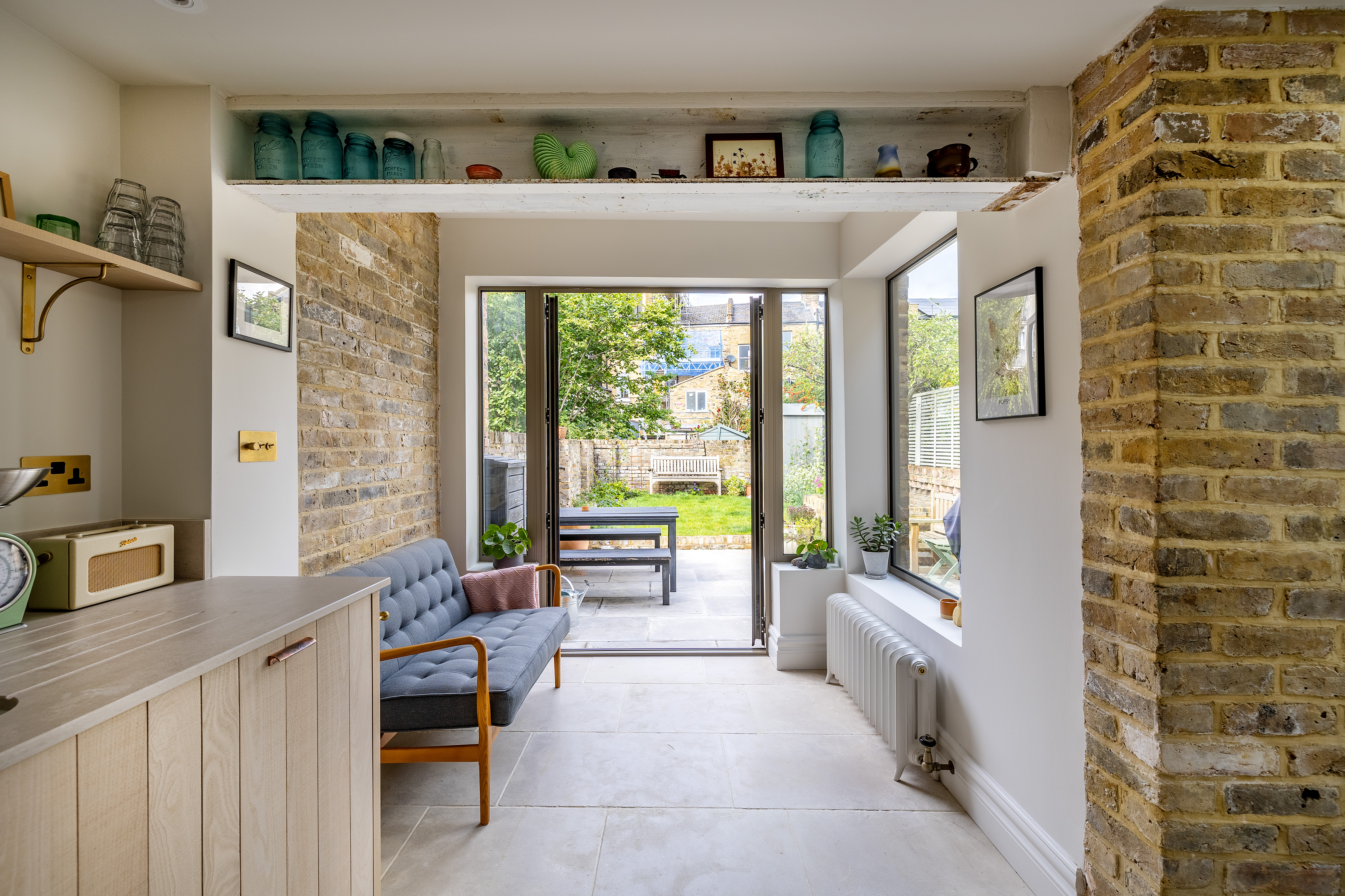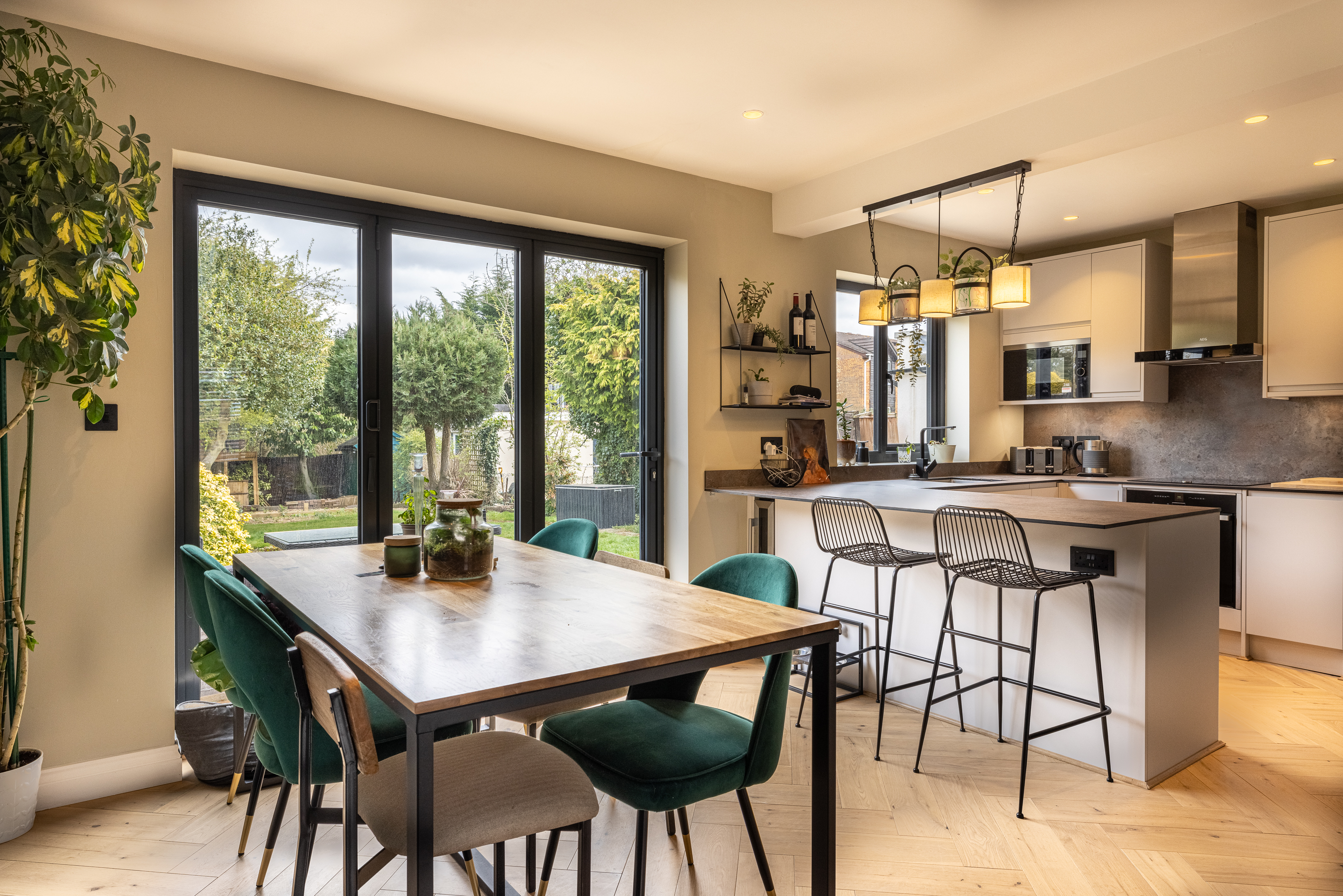How Extensions Can Boost Your Property Value
- 20-10-23
- min read
- Blog
It's no secret that homeowners consider extensions to enlarge living space, but the financial gains are also enticing.
In some cases, house extensions can pay for themselves via the sale of the house, either in the short or long term.
While extending houses to sell them for a profit in the very short term is possible, this depends on the housing market and the property's initial value.
For most, extending is not merely about adding square footage to your home, it's about enhancing its market appeal and investment value.
Let’s explore that in detail here.
In general, most data suggests extensions can boost property value by 10% to 20% or, in some situations, 25% or more.
However, this doesn’t suggest anything about the initial cost of the extension. If, for example, your property is worth £500,000 and your extension’s max all-in cost is £40,000, then a 10% boost will unlock £10,000 ‘profit.’
Of course, for those looking to sell short term, this wouldn’t account for moving costs, etc.
Boost that figure to 25%, and suddenly, your £500,000 property is worth £625,000, which means you could sell short-term for a great profit.
In real terms, it doesn’t always work out this simple. But, overall, extending is a savvy investment at the very least and may pay handsome rewards when you sell or rent.
Let’s take a closer look at different extension types and their potential financial rewards:
While loft conversions may seem easy to add an extra room to your property, their financial impact is anything but trivial.
The conversion of your attic into a functional space – be it a bedroom, office, or leisure room – can deliver a substantial return on investment (ROI).
Based on data from Zopa in 2017, loft conversions could offer up to a 70% ROI. This translates to a profit of £70,000 on an initial investment of £100,000, making it a top choice for increasing property value.
Above: Stunning loft conversion by Design Team in E17
Other data from On The Market indicates that a loft conversion can boost property value by 21%.
Loft conversions are nearly always used to create an extra room but require fewer structural modifications than some forms of extensions, hence why their ROIs are also high.
A well-constructed loft conversion can add vast appeal to homes in high-demand areas where space is at a premium, e.g. in residential London.
Rear extensions have been the answer for anyone wishing to expand their kitchens and/or downstairs living area, and the financial incentives are just as lucrative.
According to Zopa, kitchen extensions, a subset of rear extensions, have a 51% ROI as of 2017. Even without expanding, a new kitchen alone can boost your home's value by up to 15%.
Of course, extending your property and installing a new kitchen will cost more than extending alone, but this is the perfect opportunity to start again from scratch and create the kitchen you want.
Predominantly seen in Victorian or Georgian terraced and semi-detached homes, these extensions exploit the narrow alleys that usually run alongside these properties.
While specific ROI data is lacking, their value impact can be approximated based on general extension ROI figures. Considering that most extensions offer a value increase of 10% to 25%, side return extensions likely fall within this range.
Above: Beautiful ground floor extension by Design Team in SW12.
The beauty of side return extensions is their ability to leverage disused space. Moreover, a well-executed side return extension can look visually stunning, massively boosting a home’s appeal and value.
For those looking to make a significant change, a two-storey extension offers the most transformative potential – both in terms of space and property value.
Nationwide research suggests that this type of extension can increase a home's value by up to 23%, a figure that could be even higher in some areas.
However, a two-storey extension costs significantly more than any other.
Combining the principles of both rear and side extensions, wraparound extensions offer the best of both worlds.
They’re an ideal solution for those who want a comprehensive change and are looking to expand both living areas and kitchens.
Above: Extension with skylight side return by Design Team in SW2.
Although pricier, their ROI can be substantial, especially considering they can add over 40m2 of space to a home.
The key takeaway? Extensions aren't just about extra space; they're a strategic investment that can offer substantial financial rewards.
Understand Your Local Market: Before drawing the first line on your extension blueprints, familiarise yourself with your local housing market. Are people in your neighbourhood looking for extra bedrooms for a growing family, or is there a trend toward smaller, efficient spaces due to an influx of young professionals?
Cost vs. Value Analysis: Once you've identified the high-demand space types in your area, perform a cost vs. value analysis. This involves calculating the potential cost of your extension and comparing it to the additional value it's likely to bring to your property. In some upscale areas, even a small increase in square footage can substantially increase property value.
Seasonal Demand: Don't overlook the seasonal factors that might affect demand. For instance, if you live near a university, demand for rental spaces could be cyclic. Timing your extension's completion to coincide with high demand can result in immediate ROI.
Longevity and Aesthetics: When choosing materials for your extension, consider the upfront cost, long-term maintenance costs, and lifespan. Hardwood floors might be more expensive initially, but can add a sense of luxury and longevity to your extension. On the other hand, cheaper laminates might wear out sooner, leading to future costs and possibly diminishing the value of the extension.
Future-Proofing: As the years go by, certain materials may become obsolete or go out of style, while others remain timeless. For instance, natural stone countertops have been in demand for decades and will likely remain so, thereby future-proofing your investment.
Eco-friendly Options: Many potential buyers are looking for sustainable homes. Materials such as bamboo flooring or recycled glass tiles stand out as unique features, adding value.
Solar Panels: While the initial investment for solar panels can be significant, the long-term savings on electricity bills and the increasing demand for sustainable energy sources can make this a smart addition to your extension.
Insulation: Don't skimp on good-quality insulation. Well-insulated walls can drastically reduce heating and cooling costs, making the property more appealing to buyers.
Smart Home Features: Incorporating smart home technologies can significantly boost your extension's market value. From smart thermostats that optimise heating and cooling to advanced security systems, tech-savvy additions can make your home more efficient and attractive.
Open-Concept Design: Open floor plans often yield higher resale values because they make homes feel larger and brighter.
However, it's essential to consider the target demographic. While young families and professionals may prefer open-concept spaces, older buyers might prioritise more segmented, traditional layouts.
Room Placement: Think critically about where the extension is added. If you're extending your kitchen or adding a family room, ensuring it's easily accessible from the main living areas is key. No one wants to walk through a maze to get from the dining room to the newly extended area.
Maximising Natural Light: Incorporate design elements like skylights or large windows to maximise natural light, which is appealing and can reduce energy costs.
Seamless Transitions: The extension should feel like a natural part of the existing structure, not an afterthought. Consistency in design elements, such as flooring, wall colour, and fixtures, can contribute to this seamless transition.
Personalisation vs. Neutral Palette: While going bold with design is tempting, consider sticking to a more neutral palette for better resale value. Buyers should be able to visualise their own belongings in the space.
Multi-Functional Spaces: Given the trend toward remote work and homeschooling, creating a multifunctional space can add immense value. A room that can easily be converted into a home office, guest room, or study area is valuable.
Consult Professionals: Never skip the legal steps needed for home extensions. Consult professionals to ensure you are abiding by all laws and regulations. Design Team will help you design stunning, compliant extensions.
Required Approvals: Failure to secure Planning Permission and/or Lawful Development Certificates and Listed Building Consent can severely diminish your property value and could result in legal action. Moreover, all extensions must comply with Building Regulations. Never begin construction without proper clearance.
Design Team works with local councils to secure Building Regulation approval and can liaise with local planning authorities to help you secure Planning Permission if required.
Neighbourhood Aesthetics: Some areas have guidelines about maintaining the architectural integrity and aesthetics of the neighbourhood. Ensure your extension doesn't breach any such regulations, as this could affect not just legal aspects but also your property’s desirability. Again, Design Team will help you with this.
Extensions are a surefire way to boost property value in the short and long term.
For most, extensions aren’t just a means of investing in their property or making a profit – they’re also to expand living space and improve lifestyles.
But, in addition to that, it’s certainly possible to recover your initial investment from the eventual sale of your home or even make a profit.
To maximise your returns, choose a professional home extension designer and planner such as Design Team.
Design Team has years of experience in designing stunning extensions that enhance your property while unlocking value.
Contact us today to find out more about how we can help you.
Book a free Design Consultation with one of our team to discuss your project in more detail.

19-02-24 5

19-02-24 5
.jpg)
17-01-24 5